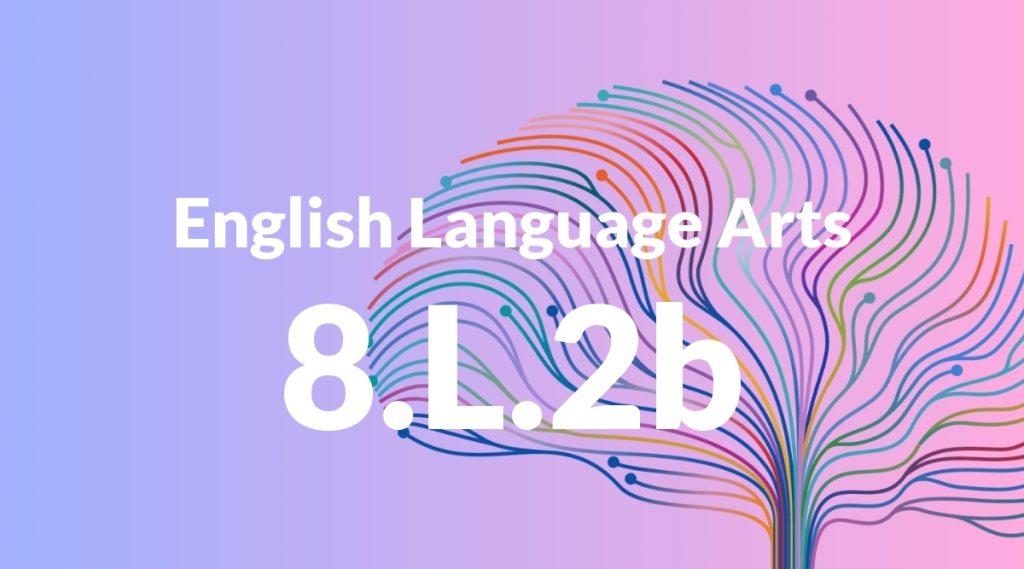Standard: 8.L.2b – Use an ellipsis to indicate an omission.
Grade level: Grade 8
Subject: English Language Arts
Domain: Language
Teacher Overview
The standard 8.L.2b focuses on teaching students how to use ellipses to indicate omissions in text. This skill is important for both creative and academic writing, as it allows students to condense information while maintaining the original meaning. Mastery of this standard contributes to students’ overall writing fluency and precision. Before tackling this standard, students should be comfortable with basic punctuation marks and their functions. They should also understand the importance of accurately quoting text and the role of punctuation in conveying meaning.
After mastering the use of ellipses, students will be equipped to use advanced punctuation marks, such as dashes and parentheses, to enhance their writing. They will also improve their editing skills, enabling them to create clear and concise text.
Common Misconception 1
A common misconception is that ellipses can be used arbitrarily in any part of a sentence. This is incorrect because ellipses have specific uses, such as indicating omitted text in quotes or trailing thoughts in dialogue.
Intervention 1
Provide students with examples of correct and incorrect use of ellipses. Engage them in exercises where they identify appropriate contexts for ellipsis usage and practice rewriting sentences with proper ellipses.
Common Misconception 2
Another misconception is that an ellipsis should always consist of more than three dots. This is incorrect; an ellipsis is always three dots, and any additional punctuation should be added separately.
Intervention 2
Teach students the correct format of an ellipsis through visual aids and practice exercises. Reinforce the rule that an ellipsis is three dots and demonstrate how to add other punctuation marks when necessary.
Prerequisite Knowledge
Students should understand basic punctuation marks, such as periods, commas, and quotation marks, and their functions in writing. They should also be familiar with the concept of quoting text and the importance of maintaining the original meaning when shortening quotes.
Subsequent Knowledge
After mastering the use of ellipses, students will develop skills in advanced punctuation, including the use of dashes and parentheses for additional information. They will also enhance their ability to edit and revise text for clarity and conciseness.
Instructional Activities
- Create sentences with omitted words and have students fill in the blanks using ellipses.
- Analyze excerpts from literature where ellipses are used and discuss their purpose.
- Practice rewriting lengthy quotes with ellipses to maintain the original meaning.
- Engage in peer editing sessions focusing on the correct use of ellipses in student writing.




